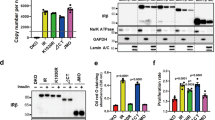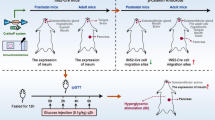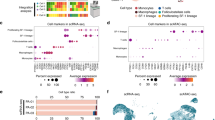Abstract
Summary: 125 I-Tyr insulin (125I-Tyr Ins) was injected into the vitelline vein of rat fetuses in utero after 17, 19, or 21 days of gestation. Three min later, the weight and radioactivity of various organs and of the remaining carcass were measured. A radioactivity concentration index (RCI) was calculated by dividing the specific activity of each organ by that of the whole feto-placental unit. In each of the three age groups studied, the RCI indicated that 125I-Tyr Ins was concentrated in several organs, notably the liver and kidneys. The lungs also concentrated the labeled hormone; however, only the youngest fetuses revaled significantly elevated levels. Lung RCIs were 1.68 ± 0.27, 0.67 ± 0.12, and 0.85 ± 0.18 after 17, 19, and 21 days of gestation, respectively. Three, 9 and 15 min after 125-I-Tyr Ins injection, the lungs and liver of 17-day postcoitum fetuses were homogenized and then subjected to gel chromatography. During the 15 min period of investigation, the percentage of intact labeled hormone in the liver and lungs decreased while the percentage of 125I-tyrosine increased.
Autoradiographs of the fetal lungs indicated that the pseudoglandular cells bound 125I-Tyr Ins (surface density of grains 9 min after 125I-Tyr Ins alone, 1.71 ± 0.22) and that this process was inhibited by coinjection of 100 mU unlabeled insulin (surface density of grains, 0.50 ± 0.16; P < 0.001). At 9 min, the surface density of grains on the bronchial tubes was only six times less than that of the hepatocytes of the same fetuses. It was concluded that epithelial lung cells during the pseudoglandular stage are equipped with numerous insulin receptors and appear capable of degrading insulin. The concentration of receptors markedly decreased at a later stage of lung development.
Speculation: It is speculated that insulin receptors may modulate lung glycogen metabolism. Their presence would favor accumulation of glycogen during the pseudoglandular stage whereas their partial disappearance at a later stage of maturation would allow glycogen breakdown and surfactant synthesis.
Similar content being viewed by others
Log in or create a free account to read this content
Gain free access to this article, as well as selected content from this journal and more on nature.com
or
Author information
Authors and Affiliations
Rights and permissions
About this article
Cite this article
Sodoyez-Goffaux, F., Sodoyez, J. & De Vos, C. Insulin Receptors in the Fetal Rat Lung. A Transient Characteristic of Fetal Cells?. Pediatr Res 15, 1303–1307 (1981). https://doi.org/10.1203/00006450-198109000-00014
Issue date:
DOI: https://doi.org/10.1203/00006450-198109000-00014



